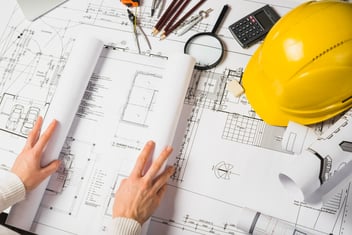Interactive Mapping for Hospitality Facilities
Interactive maps are facility blueprints and floor plans that have been transformed into digital maps. These interactive maps can be used by facility management teams via computer, laptop, tablet, or smartphone. This transformation takes standard paper or digital blueprints and floor plans from your facility, whether it be a museum, performing arts center, hotel, or casino, and turns them into an intuitive tool that provides quick access to digital maps, work orders, and asset information with the touch of a finger.
Key Features of Interactive Mapping
Interactive mapping for facilities operating within the hospitality industry has two key features that enhance their value, making them much more than just digital versions of existing blueprints or floorplans.
- Equipment Cards - This digital tool gives facility managers and technicians insight into specific pieces of equipment. Data collected and available through the maps includes the install date, warranty expiration date, upstream and downstream connectivity, associated work orders, replacement value, attached files, and more.
- Annotation Layers - Critical information that may not be available on your facility's original blueprints or floor plans can be added to interactive maps using an annotation layer tool. These customized digital layers are simple to add, view, and remove by facility managers and technicians. Evacuation routes, electrical connectivity, and room numbers are just a few examples of what annotation layers can be used to display within an interactive mapping software system.
Benefits of Interactive Mapping
- Centralize and streamline critical facility workflows
- Map and manage assets, zones, and systems within the facility
- Display system connectivity upstream and downstream
- Map and manage exact equipment locations throughout a hotel, museum, golf club, etc.
- Manage vendor information, service contracts, and warranties
- Attach pictures, maintenance documents, and notes to any assets
Facilities, small and large, throughout the hospitality industry, can benefit significantly from interactive maps. Facility managers and technicians can utilize this intuitive software to increase maintenance efficiency and enhance communication. Interactive maps streamline workflows by allowing managers and technicians to easily view and edit work orders and asset data in an exact location.
Interactive mapping also provides immediate access to critical information like zone and mechanical fire system data, allowing a plan of action to be swiftly executed in an emergency. Overall, interactive maps are created with crucial facility asset locations and information, creating a centralized and organized system for more efficient facility management and better guest experiences.
.png?width=268&height=52&name=f1-logo2%20(1).png)



